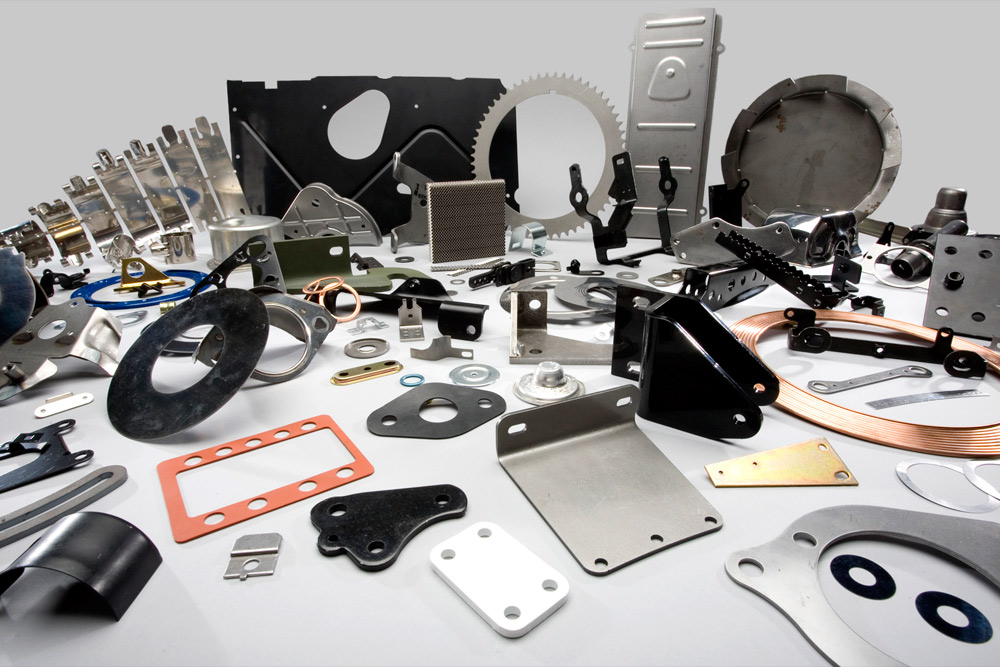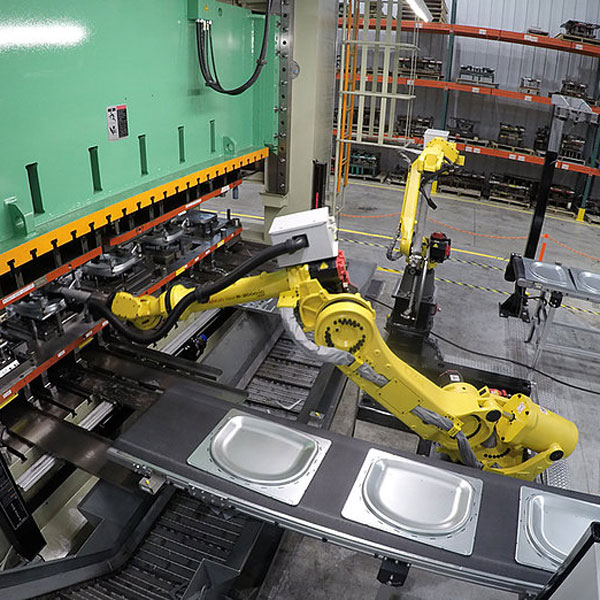Metal Marking Advancements: Elevating Production Processes for Superior Outcomes
In the world of manufacturing procedures, metal stamping has long been a keystone strategy for generating a selection of accuracy components. With the relentless march of technical advancement, the landscape of metal stamping is undertaking a considerable improvement.
Evolution of Steel Stamping Methods

Additionally, developments in material scientific research have resulted in the development of high-strength alloys that can currently be effortlessly marked into elaborate forms, dealing with a broader series of commercial applications. The combination of robotics and expert system has actually even more enhanced the stamping procedure by enhancing rate and accuracy while lowering the threat of human mistake.

Impact of Advanced Materials
Have sophisticated materials changed steel stamping procedures dramatically in the production market? By making use of products such as high-strength alloys, advanced composites, and ingenious layers, steel stamping processes can currently produce parts that are lighter, stronger, and a lot more sturdy than ever previously.
These innovative products use exceptional mechanical homes, corrosion resistance, and thermal stability, permitting suppliers to satisfy the demands of modern markets such as aerospace, automotive, and electronic devices. Furthermore, the use of innovative materials in metal marking has helped with the manufacturing of intricate geometries and intricate designs that were formerly unattainable with typical techniques.
In addition, the implementation of innovative products has actually caused decreased material waste, lower manufacturing prices, and much shorter preparations, making steel stamping processes much more lasting and affordable. As modern technology remains to advance, the influence of advanced materials on steel marking procedures is expected to drive more advancement and enhance the competition of suppliers in the international market.
Automation in Steel Stamping
The development of metal stamping processes driven by the combination of innovative materials has actually established the stage for substantial developments in automation within the production market. Automation in steel marking has changed production procedures, improving effectiveness, precision, and general output high quality. Through the utilization of robotics, sensors, and computer-controlled systems, jobs that were time-consuming and when manual can now be carried out with unrivaled rate and precision.
Automation in steel stamping not only increases production prices but also ensures uniformity in the production process. By decreasing human treatment, the danger of errors is significantly reduced, bring about higher levels of product harmony and dependability. In addition, automation enables makers to carry out complex stamping jobs that would be tough or not practical to achieve by hand.
Additionally, automation in metal stamping adds to a much safer working environment by reducing the demand for employees to take part in repetitive or dangerous jobs - Metal Stamping. This shift in the direction of automation not only enhances performance however likewise leads the way for the future his explanation of production, where innovation plays a central role in driving functional quality
Quality Assurance and Inspection Equipments
With a concentrate on accuracy and reliability, top quality control and examination systems play an essential role in making certain product excellence in metal stamping processes. These systems are created to monitor every stage of manufacturing, from material examination to the end product, to ensure that all elements satisfy the called for requirements. By implementing sophisticated modern technologies such as optical examination systems, coordinate measuring devices (CMM), and automated assessing devices, suppliers can find even the tiniest inconsistencies in measurements, surface area quality, great site and general honesty of stamped components.

Sustainability Practices in Steel Stamping
Structure upon the structure of accuracy and integrity established through quality assurance and examination systems, the assimilation of lasting practices in metal stamping processes is progressively becoming a focal factor for makers seeking to reduce environmental influence and enhance source usage. Sustainability methods in metal marking include a variety of efforts targeted at lowering waste generation, power consumption, and greenhouse gas exhausts throughout the production process.
One trick element of sustainability in steel marking is the fostering of environmentally friendly products and technologies that advertise recyclability and waste reduction. By making use of recycled products and executing energy-efficient equipment, producers can lower their carbon impact and contribute to an extra sustainable manufacturing cycle. Additionally, optimizing manufacturing procedures to minimize product waste and power usage not just benefits the setting yet additionally results in set you back savings for companies over time.
In addition, the execution of sustainable techniques in steel marking can improve brand name reputation and attract environmentally conscious customers. As sustainability continues to gain value in the manufacturing market, incorporating environment-friendly initiatives right into metal stamping procedures is crucial for long-lasting success and competitiveness on the market.
Conclusion
Finally, steel stamping strategies have actually substantially developed gradually, integrating sophisticated materials and automation to enhance manufacturing procedures. Quality assurance and examination systems play an important duty in guaranteeing premium outcomes, while sustainability techniques a fantastic read are progressively being executed to reduce environmental effect. These innovations in steel marking have actually changed the market, causing much more sustainable and efficient production techniques for different markets.
Steel stamping, once a manual and labor-intensive process, has transformed into a very automated and innovative method of shaping metal sheets into various types and styles.Have innovative products changed metal marking procedures substantially in the production sector? By using materials such as high-strength alloys, progressed composites, and cutting-edge finishings, steel marking processes can currently produce elements that are lighter, stronger, and much more resilient than ever in the past.
The advancement of steel stamping procedures driven by the integration of advanced products has set the phase for substantial advancements in automation within the production industry.In conclusion, steel marking methods have actually significantly evolved over time, including sophisticated materials and automation to improve producing procedures.